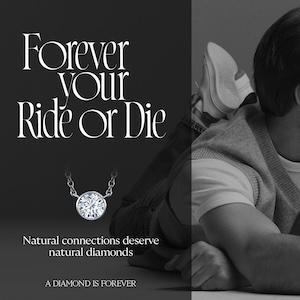
While the colored stone trade may may be going through its traditional summer ebb, Stuart Robertson, president of Gemworld International, which publishes the bimonthly pricing publication GemGuide, is looking ahead to the fourth quarter and expects the year to end on a positive note.
“For the holiday, we will be past the election and the season will actually be better than it looks like now,” Robertson tells JCK. “The election cycle is drawing all the oxygen out of the room. Dealers are saying the market has slowed down.

“Part of that is the regular summer lull, but at the midlevel of the trade, it takes a lot of work to sell even higher-end stones,” he adds. “Demand is still there, but it’s much harder to sell goods. People are nervous about the direction the economy is going. And this is not an unusual situation. It shouldn’t be a surprise to anybody.”
Below, Robertson provides JCK with an update on supply and demand, shares which gems are poised to be good values this fall, and reminds us how the world of color is fundamentally different from that of diamonds.
“Gemstones, when they’re properly presented to the consumer, don’t sell like a commodity based on a report,” Robertson says. “There’s a strong emotional connection that is transferred when somebody buys for themselves or gifts a colored stone. Our market will bounce back fairly quickly.”
What has changed since last winter’s Tucson gem shows in terms of demand?
We are seeing a change in what’s moving. In Tucson, it was a sapphire market, a garnet and tourmaline market. Now, driven by the designer and custom jewelry side, unusual things like agates are selling well. Someone told me they experimented with moss agate—a company that typically doesn’t sell that kind of material—and it sold well and they’re looking for more.

Tourmaline and garnets because of their name recognition are still doing okay, but where we’re really seeing more directed interest is in unusual things that are not necessarily expensive: agate, sunstone, blue zircon.
Peridot is doing well, partially because there’s more concentrated effort in marketing peridot with consistency of cut and a full range of material. It’s not just calibrated goods, but also precision-cut stones. Fuli Gemstones [the Chinese peridot mining company] is putting a lot of money into marketing it. It’s kind of like the De Beers campaigns for diamonds. It’s not just the Chinese material that is selling; other peridot deposits are benefitting.

Which colors are rising to the fore for the coming holiday?
We’re going to see pastels—bright but lighter tones—be popular again. Some of that is price point–driven, but we’re also just cycling back into former areas of interest. Bold representations of color were popular for the last few years, but now we’re seeing other colors come up.

Blue does well because it runs the full range, from light to dark. Red does okay, but the number of stones that are affordable in vivid red are limited. Ruby, if it’s Burma, is out of reach for most consumers. If it’s Mozambique, it’s getting out of reach for most consumers.
Just as we mentioned in Tucson, we see a lot of color substitution. Consumers may say ruby, but they’re referring to the color, not the mineral. Blue zircon is very popular now just because of the brightness of the material but also because it’s an inexpensive blue and there are not a lot of inexpensive blues out there.
What about the supply side—what are we seeing there?
We’re not hearing a lot of good things on the production side. A lot of the producers we follow are smaller-scale producers. The cost of fuel and other things used in mining is still very expensive. We’re still seeing examples of actual miners trying to sell directly to consumers into the U.S. market. The internet has made it a possibility. And it’s so expensive day-to-day to produce that they’d like to make as much money as possible. Prices are still very high on the production side. The slowdown in the market isn’t driven by greed, but by high costs that did not go down after the pandemic.
Have wholesale gem prices changed in the last half-year?
There’s a reason you’re hearing so many diamond dealers talking about getting into colored stones. That’s because colored stone prices have been holding fairly well. With the exception of a few large-scale producers, a lot of what you see at trade shows comes through small-scale production. It’s a free market system. Prices have held fairly well since Tucson even as the market has slowed down.
When we get to the point where demand starts to ease, production just starts to slow down and day laborers move to other fields. That’s not how production works in the diamond industry. As a result, prices in colored stones have been fairly well insulated.
Which stones represent the best value this coming fall?
Zircons and garnets are good buys. Some of the feldspars like moonstone have not moved up in pricing and are getting more noticed. Tsavorite had a high and is more interesting now. We do like zircon as long as people know how to use it. Aquamarine is another one. If you stay away from the really high Santa Maria type of material, it’s still really affordable.

Finally, any insights about the fourth quarter you’d like our readers to know?
I think the season will pick up after the election. We’ll have a slow fall, but no matter what the outcome is, at least there will be a resolution. The retail market was fairly well positioned in the U.S. And maybe one or two interest rate cuts will help.
The U.S. is a credit-addicted consumer. So if the cost of financing is not really high, consumers will aim above their belt on purchasing. As interest rates come down and credit card costs come down, that will help generate some interest. Once we get past the election, we’ll start to see things pick up again.
Top: 14k yellow gold ring with 7.06 ct. blue zircon and 0.27 ct. t.w. diamonds, $4,250; Artistry, Ltd.
Follow JCK on Instagram: @jckmagazineFollow JCK on Twitter: @jckmagazine
Follow JCK on Facebook: @jckmagazine






